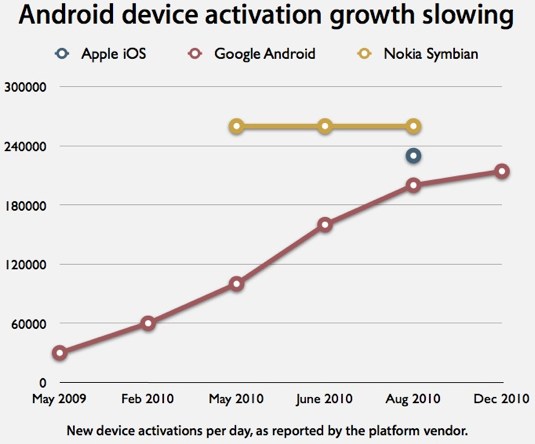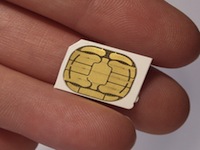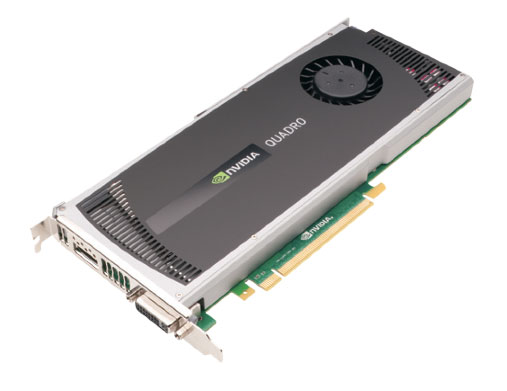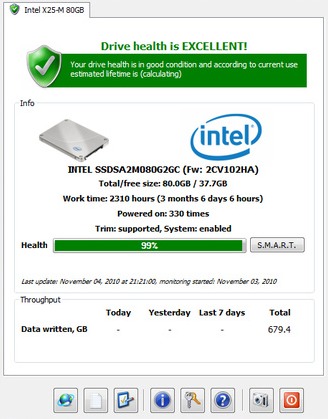Apple updates Cinema Display firmware to fix audio issue
AppleInsider reported earlier this month that owners of Apple’s new 27-inch LED Cinema Display were experiencing problems with the hardware’s speakers. According to multiple postings on several threads on Apple’s official discussion forums, the audio on some of Apple’s Cinema Displays would cut out until the display was unplugged and then plugged back in.
Other users also experienced issues with the response time of volume control on the keyboard, with delays of 6 to 7 seconds after pressing a key to adjust the volume.
The LED Cinema Display Firmware Update 1.0 released by Apple on Wednesday appears to solve the issue of audio cutting out. Apple’s support page for the update says the 957KB download "addresses intermittent audio issues some users have experienced."
To install the update, users should first connect their LED Cinema Display by USB to a Mac, then run Software Update. According to Apple, the updater application will download to the Utilities folder and should run automatically. Users can also manually download the update and install the application themselves.
Several users of Apple’s discussion forums have reported that the update fixed the audio problems they were experiencing with their Cinema Displays.
Prior to the release of the 27-inch Cinema Display, Apple released LED Cinema Display Software Update 1.0, adding ambient light sensor settings to the System Preferences pane and an update to the Sound preferences pane in Mac OS X.
The $999 27-inch LED Cinema Display went on sale in September, sporting a 2,560-by-1,440 pixel resolution and a 178-degree viewing angle. Previously, Apple sold 24- and 30-inch Cinema Display models, but those have been discontinued in favor of the 27-inch version.
Android activation pace hits a plateau below Apple’s iOS
Android mobile activation numbers have leveled off dramatically after two years of rapid increases, signaling a maturing of the platform’s growth phase as an alternative to Apple’s iOS, which continues to claim a lead.
At the company’s Android OS 2.3 Gingerbread release event today, Google noted that the current pace of Android’s weekly device activations was at 1.5 million, or just over 214,000 per day. That compares with 230,000 iOS devices per day, as reported by Apple back in September.
Android’s activation growth is less than 8 percent higher than the number Google cited in August, indicating a plateau in the growth of new Android activations after a summer of impressive growth figures that once swelled by 60 percent within just a month.
Observers closely watched iPhone sales looking for signs of change in demand, interpreting cyclical changes related to new model introductions as predictors of whether Apple could meet its initial goals or rival entrenched competitors including Microsoft’s Windows Mobile, RIM’s BlackBerry and Nokia’s Symbian platform.
In the Android world however, the variety of hardware makers capable of shipping Android-based phones makes it more difficult to immediately count how many phones are being sold collectively. Google has instead preferred to publish activation numbers.
Throughout 2009, the pace of Android’s activations nearly doubled from 30,000 per day in the spring ramping up to 60,000 new mobiles per day in February 2010. Rapid growth continued in 2010, enabling Android to hit 100,000 activations in May and 160,000 in June. By early August, Google was claiming 200,000 Android activations per day.

iOS vs Android activations
Speaking at Apple’s iPod event in early September, Steve Jobs took issue with Google’s activation numbers. Recapping iOS device sales at the event, Jobs told the audience, "People are throwing around a lot of numbers as to how many of their operating systems they’re activating per day. We are activating a little over 230,000 iOS devices per day. And that’s new activations."
Taking a shot at Google, Jobs added, "we think that some of our friends are counting upgrades in their numbers. If we counted upgrades in our numbers, they’d be way higher than 230,000. But we think the most appropriate way to count them is just new activations."
Google responded by saying that its reported Android activation numbers "do not include upgrades and are, in fact, only a portion of the Android devices in the market, since we only include devices that have Google services."
Google’s latest December number of around 214,000 daily activations is not only below Apple’s figures from September, but also only slightly better than it had claimed back in August, despite a new flurry of Android smartphones and new tablets such as the Samsung Galaxy Tab.
A tough nut to crack for everyone else
During September’s Nokia World event, Nokia vice president Niklas Savander claimed his company had sold 260,000 phones per day during the summer, saying this figure was greater than Apple and Google’s platforms combined. Electronista said the "claim was dubious."
However, the rapidly slowing pace of Android’s activations, together with the slightly higher numbers reported by Apple and the rather low ceiling claimed by Nokia indicate that platform growth among the leading mobile device platforms is reaching an equilibrium, particularly in the market for smartphones.
This suggests new growth will have to come from either predatory growth that comes out of the hide of existing players, or from new categories of devices ranging from iPod touch-like mobile media players to iPad-like tablet devices.
This also provides a bleak outlook for new platforms hoping to enter the saturated mobile platform market, particularly Microsoft’s new Windows Phone 7, HP’s emerging Palm webOS 2.0, Samsung’s Bada, and RIM’s new QNX kernel paired with Adobe AIR, used in the forthcoming PlayBook.
Apple seeds second build of Mac OS X 10.6.6 to developers
Build 10J537 of Mac OS X Snow Leopard software update 10.6.6 is a 1000MB download. The first build of Mac OS X 10.6.6 was released on Nov. 4. Mac OS X 10.6.6 "contains developer support for fetching and renewing App Store receipts," which could mean that the 10.6.6 update is scheduled for release in time for the opening of the Mac App Store, which is set to arrive within the next few months. Apple released the most recent OS X update, Mac OS X 10.6.5, on Nov. 10. The update was originally expected to include full Mac support for AirPrint, the new wireless printing feature in iOS 4.2, but documentation accompanying the release lacked any mention of the feature Just prior to the release of Mac OS X 10.6.5, reports emerged suggesting that Apple had delayed Mac OS X support for AirPrint because of last minute stability and compatibility problems.
Windows Phone 7 developers fear platform flop
Despite a reportedly healthy level of interest from developers, Microsoft’s Windows Phone 7 debut appears to have flopped with consumers, leaving developers cautious about investing in the platform.
Report predicts "monster holiday season" for Apple
Apple appears set to ride a surging wave of holiday spending, with customers reporting a big jump in their plans to buy new Mac notebooks over the next three months.
According to research performed by ChangeWave, buyers who report plans to buy a new notebook computer in the next 90 days have peaked to 10 percent of the survey group of 2,812 people, the highest level noted in the last three years.
Apple’s share of that market has also jumped, from around 25 percent to 36 percent of the survey group. Buyers’ sharply increased plans are likely related to the introduction of the new MacBook Air, which reaches new lower price points while delivering iPad-like portability.
Research director Paul Carton wrote, "the manufacturer most responsible for the surge in laptop demand is Apple, with 36 percent of planned laptops buyers saying they’ll purchase a Mac, a huge 11 percentage point jump since our previous survey of a month ago.
"Simply put," Carton said, "it’s the highest level of planned laptop buying ever for Apple in a ChangeWave survey."
Apple’s SIM Card Plan Ditched?

Previously, it had been rumored that Apple was trying to design its own SIM card for iPhone users, to give them a chance to use the device and be able to bypass carrier contracts at the same time. But now, some carriers are saying they would forgo subsidizing the costs of the phone if Apple were to follow up on those plans.
According to The Sunday Telegraph, Apple has decided to scrap the plan after carriers threatened to continue subsidizing the costs of phone. Currently, mobile operators pay Apple the full cost of the phone, which they then pass on to the consumer for free, provided they sign up for 24-month contracts.
Apple had been planning on excluding carriers, like Vodafone and O2, from the sales process, in an attempt to try and build a better relationship with customers. Apple had been trying to create an integrated SIM card which would allow customers to buy the phone outright.
Said a senior source at a mobile operator: "Apple has long been trying to build closer and closer relationships and cut out the operators. But this time they have been sent back to the drawing board with their tails between their legs." Ouch.
In sort of a "consolation prize" though, Apple is still moving forward with the new SIM card in iPads. The report is that Apple is planning to bring out the new integrated-SIM versions of the iPad prior to Christmas or early on in the new year. The reason Apple is able to move forward with the iPad instead of the iPhone on this is because the iPad isn’t subsidized by mobile carriers.
The Sunday Telegraph continued saying that a new version of the iPad would be released within a few weeks and would be comparable the current model. One change though is that the "lock" button on the right-hand side would be switched to a "mute" button such as the one on the iPhone.
Nvidia announces high-end Fermi GPU for Apple’s Mac Pro
Nvidia has announced the Fermi-powered Quadro 4000 GPU for Mac Pro upgraders, while Apple has begun sale of the ATI Radeon HD 5870 graphics card for the Mac desktop.
Nvidia announces Quadro 4000 for Mac
The new Nvidia Quadro 4000 brings the company’s Fermi architecture to Mac Pro users. With a suggested retail price of $1,199, it will be available later this month at Apple’s website and authorized resellers, as well as other distribution partners.
Film and video professionals running Mac OS X 10.6 Snow Leopard can take advantage of the Adobe Mercury Playback Engine in Adobe Premiere Pro CS5, as the software leverages Nvidia CUDA parallel processing technology. Other software that takes advantage of the high-end GPU are effects and image processing applications NUKE and STORM from The Foundry, as well as MATLAB from MathWorks.
"Adobe Premiere Pro CS5 and the Adobe Mercury Playback Engine, accelerated by Nvidia Quadro GPUs, have redefined the non-linear editing workflow, delivering huge productivity gains," said Ginna Baldassarre, senior product manager at Adobe.
"Adobe looks forward to working with Nvidia to help more Mac users reap the benefits of real-time performance and the ability to create compelling, multi-layer projects with multiple HD or higher resolution video clips, all while instantly viewing results."

Officials from MathWorks and The Foundry praised the power that the Fermi architecture brings to the Mac platform. Minimum system requirements include Mac OS X 10.6.5 with early 2008, early 2009 and mid-2010 Mac Pro models.
The high-end Nvidia Quadro 4000 GPU for Mac, with 256 NVIDIA CUDA processing cores and 2GB of fast GDDR5 memory, delivers exceptional graphics performance across a broad range of design, animation and video applications, the company said. With new Nvidia Scalable Geometry Engine technology, the Quadro 4000 for Mac can process up to 890 million triangles per second, enabling professionals to design, iterate and deliver higher quality results in less time.
Apple now selling ATI Radeon HD 5870
This week the ATI Radeon HD 5870 became available for sale in the Apple Store. The card sports 1GB of GDDR5 memory and costs $449.
Though listed requirements state that the card will only work with a mid-2010 or early 2009 Mac Pro with a PCI Express 2.0 slot, reports have indicated that the ATI Radeon HD5870 will also work with the early 2008 Mac Pro desktop.
10 Things Apple Can Do to Make Us Truly Excited by iTunes
Apple generally loves to spring new stuff upon an unsuspecting world on the second weekday, and this Tuesday promises to be no exception. But rather than a nifty new gadget that requires a trip to the Apple Store, the company has cleverly slipped a preview of an iTunes-related “exciting announcement” onto their website. What could it be?
Why Apple axed Xserve, and how it can reenter the server market
Many of Apple’s customers in enterprise environments are shocked by the company’s decision to discontinue the Xserve. There’s an easy answer why it happened: they weren’t selling well. Here’s why, and how the company may address the server market in the future, using lessons learned from iOS.
SSDLife Keeps You Informed of Your Solid-State Drive’s Health and Lifespan

We all know solid-state drives take a bit of care, so if you want to keep track of how your SSD is faring health-wise, free utility SSDLife will let you know.
While lots of newer SSDs have fewer lifespan-related problems than older ones, it’s nice to keep an eye on how your drive is doing. SSDLife will let you know how many times your drive has been powered on, written to, what its health and S.M.A.R.T. status is, and even give you an estimated lifespan of the drive. Of course, if you’d like to extend the drive’s lifespan, you can always use a tool like Intel’s previously mentionedSolid-State Drive Toolbox to make sure you’re getting the most out of your SSD.
SSDLife is a free download for Windows only. You can also purchase a $20 pro version that will scan your drive at scheduled intervals.
Google TV Users, Fancast.com Is An Open Back Door To The Hulu Estate

Hold up. Google TV isn’t totally a lost cause and it’s all because of the generosity of Comcast. Fancast, or xfinity as Comcast would like it now to be called, streams just about everything to Google TV: ABC, NBC, Fox, all but CBS shows seem to work just fine. The ironic part is that the content seems to be provided by Hulu itself judging by the logo above all the videos. But let’s keep this on the DL, m’kay? We don’t need the fat cats finding out about this little trick.
There are a few downsides to Fancast, but the benefits easily counter them. It also shows just how shallow the search depth of the Google TV search happens to be. Clearly Google TV has some growing up to do.
All you need to do is change the User Agent. It’s basically the same hack that was used to get Hulu to work on Google TV initially. But once you spend 15 seconds change the setting — and here’s how — all you need to do go to Fancast.com and start watching. Some of the premium content from Showtime and HBO are behind a Comcast paywall but the major network’s content are all available for free. Well, besides CBS material. I tried three different CBS shows and none of them got past the xfinity starting animation. But after two video ads, the rest of the content played just fine for me.
The video quality is also a bit sub-par but YMMV as Fancasts seems to adjust the resolution on the fly. Low-quality is video is better than no-quality video though. Am I right or am I right?
Google TV Search is still the crown jewel of the platform, but users should be able to modify the results. Currently, it searches a bunch of popular video sites but only displays results on the grid guide from major network sites for the free videos and Amazon VOD for the pay-per-view ones. Users should be able to change those to show search results from, say, Fancast.com and Netflix if they so please. Perhaps some content deal is behind the search tool, but it would be infinitely more useful if users could modify it slightly.
There’s good stuff to come from Google TV. That’s for sure, but it’s still a bit rough right now. Hopefully Google keeps at it and doesn’t put it out to die like Wave.